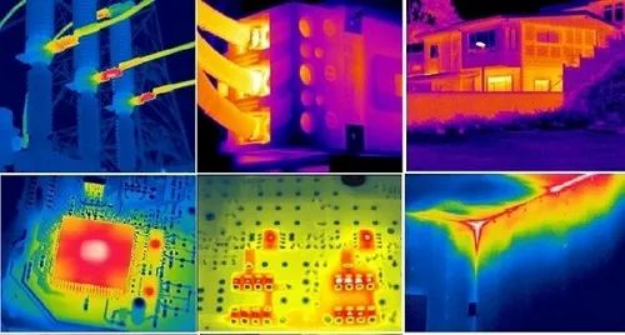Infrared sensors, as an important optoelectronic detection device, have been widely applied and promoted worldwide in recent years. With the continuous advancement of technology, infrared sensor technology is also constantly breaking through, driving the rapid development of the market. In 2025, the development status of this field demonstrates a dual vitality of technological innovation and market expansion.

Technological Innovation and Breakthrough
After years of development, infrared sensor technology has achieved significant results. Its core lies in the ability to detect the infrared radiation released by objects and convert it into electrical signals, thereby achieving non-contact measurement and detection. This characteristic makes infrared sensors have broad application potential in multiple fields.
In recent years, technological innovation in infrared sensors has mainly been reflected in improving detection performance, reducing costs, and enhancing intelligence. The new generation of infrared sensors adopts advanced optical design, which enables longer detection range, wider angle, and faster response speed. Meanwhile, with the advancement of semiconductor manufacturing processes, the manufacturing cost of infrared sensors has been effectively reduced, making the products more competitive in the market.
In addition, the intelligence level of infrared sensors is constantly improving. By integrating microprocessors, algorithm optimization, and other technologies, infrared sensors can achieve more intelligent functions such as automatic recognition and adaptive adjustment. These technological innovations have injected new vitality into the infrared sensor market, driving its development to a higher level.
Market Expansion and Application Fields
With the rise of emerging technologies such as the Internet of Things, big data, and cloud computing, the infrared sensor market has been further expanded. Its application areas have expanded from traditional security monitoring and industrial automation to multiple fields such as smart homes, automotive electronics, and medical testing.
In the field of security monitoring, infrared sensors have been widely used in scenarios such as facial recognition, vehicle detection, and fire alarm. With the assistance of infrared sensors, the system can effectively identify and capture suspicious targets, improving its security and prevention capabilities.
In the field of industrial automation, infrared sensors play an important role in machine vision, production process control, quality inspection, and other areas. They are widely used in various aspects of manufacturing, improving production efficiency and product quality.
In addition, the application of infrared sensors in the field of smart homes is becoming increasingly widespread. As the core motion detection component, infrared sensors are widely used in door and window sensing, lighting control, and security alarm systems, effectively improving user experience and safety.
In the field of medical testing, infrared sensors have been applied in temperature detection, disease monitoring, and other aspects. Especially during the epidemic prevention and control period, infrared temperature detectors have become important epidemic prevention tools in public places.
Market competition and challenges
Currently, the competitive landscape of the infrared sensor market presents a multipolar characteristic. There are numerous well-known companies and emerging startups competing globally. Enterprises from countries such as the United States, Japan, Germany, and China occupy important positions in the infrared sensor market. Among them, American companies occupy a certain share in the high-end market with their technological advantages, while Chinese companies have advantages in cost control and the local market.
However, the infrared sensor market also faces certain challenges. On the one hand, the increasingly fierce competition for product homogenization has led to intensified market price competition; On the other hand, fluctuations in raw material prices have an impact on the production cost of infrared sensors, which in turn affects product prices and profit margins. In addition, infrared sensor technology still has certain limitations, such as detection distance, response speed, anti-interference ability, etc., which need to be further improved.
Future prospects
Looking ahead to the future, the infrared sensor industry will usher in broader development prospects and investment potential. With the continuous progress in fields such as materials science, microelectronics technology, and optical technology, the performance of infrared sensors will be further improved and their application scope will become more extensive. Especially in emerging markets and emerging application areas such as autonomous driving, virtual reality, etc., the application prospects of infrared sensors are broad.
Meanwhile, sustained policy support and integrated optimization of the industrial chain will also provide strong guarantees for the infrared sensor industry. The increasing attention of governments around the world to energy conservation, emission reduction, and environmental protection technologies has promoted the application of infrared sensors in the field of environmental protection. In addition, with the continued prosperity of the consumer electronics market, the demand for infrared sensors in fields such as smart wearables and smartphones is also growing.
In summary, the infrared sensor industry in 2025 is at the intersection of technological innovation and market expansion. Faced with the coexistence of challenges and opportunities, enterprises need to continuously strengthen technological innovation and R&D investment, improve product quality and performance; Simultaneously emphasizing brand building and marketing, enhancing brand awareness and reputation. Only in this way can we stand undefeated in the fierce market competition and promote the sustained and healthy development of the infrared sensor industry.
Source: Sensor Expert Network



